Blog
Open-Kinetic Chain vs Closed-Kinetic Chain Exercise for Bodybuilding
Demystify the hype around kinetic chain training.
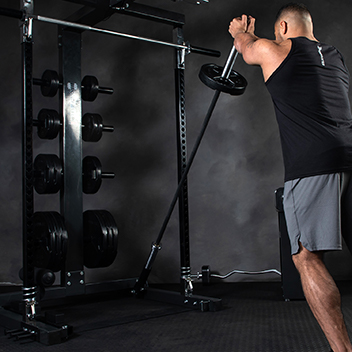
Ever wonder what all the hype is around open or closed kinetic chain training? If you follow some of the top fitness influencers on social media, you have probably heard a lot of technical buzz words dropped at some point.
In this blog, we will demystify the hype around kinetic chain training and how you can incorporate it into your own regimen.
Definition of Open Kinetic Chain (OKC)
Open Kinetic Chain exercises are typically single-joint movements where the most distal joint or segment of the kinetic chain is not constrained. This allows the last segment of the chain to move freely and isolate specific muscle groups due to joint flexion or extension. Some good examples of OKC movements are lying hamstring curls, dumbbell curls, quad extensions, dumbbell rows, etc.
Definition of Closed Kinetic Chain (CKC)
Closed Kinetic Chain exercises are typically compound movements involving 2 or more joints. In essence, these exercises have the most distal kinetic chain segment relatively fixed or stationary. This forces the body to move through space relative to the constraining surface such as the floor. Via these compound movements, you are forcing your body to recruit each segment in the kinetic chain to work together and execute the motion. Some good examples of CKC exercises are deadlifts, squats, pushups, etc.
The 5 Kinetic Chain Check Points
- Head/Neck
- Shoulders
- Lumbo -Pelvic-Hip Complex
- Knees
- Feet/Ankles
Recommended Kinetic Chain Assessments for new athletes
For optimal performance and injury prevention, I recommend taking a few body mechanics assessments. This will help identify inefficiencies in the human movement system (HMS) and isolate dysfunctional joint movements (arthrokinematics) or compensations.
The below information is recommended by the National Academy of Sports Medicine (NASM):
Kinetic Chain Assessments
A kinetic chain assessment is designed to identify dysfunction within the human movement system (HMS):
Altered length-tension relationships of soft tissues (muscles, ligaments, tendons, and fascia)
Altered force-couple relationships (compensatory movement)
Altered arthrokinematics (joint dysfunction)
A great tool to identify compensations and any dysfunctional movements in the kinetic chain is the NASM Overhead Squat Assessment. This is a dynamic postural assessment consisting of observing the participant from the anterior, lateral, and posterior perspectives for identifying any compensations in the kinetic chain. These compensations are typically due to short and long muscles, or over and underactive muscles in each segment. The goal is to identify those muscles and develop a corrective exercise continuum to improve overall body mechanics and performance.
Examples of Overhead Squat Assessment & Kinetic-Chain Compensations:
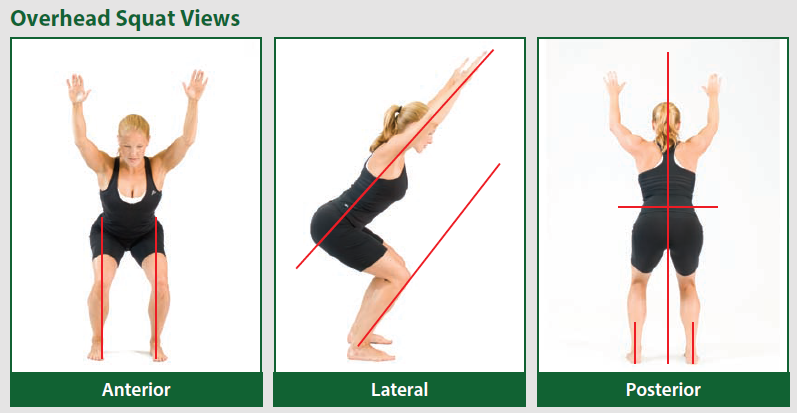
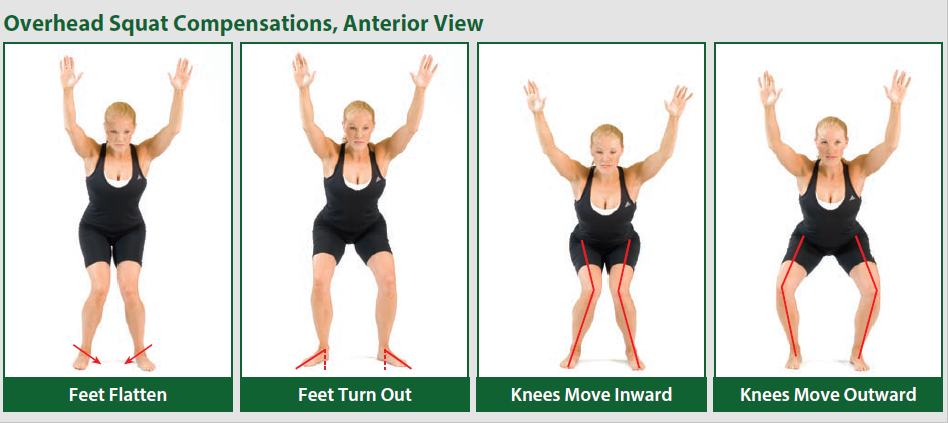
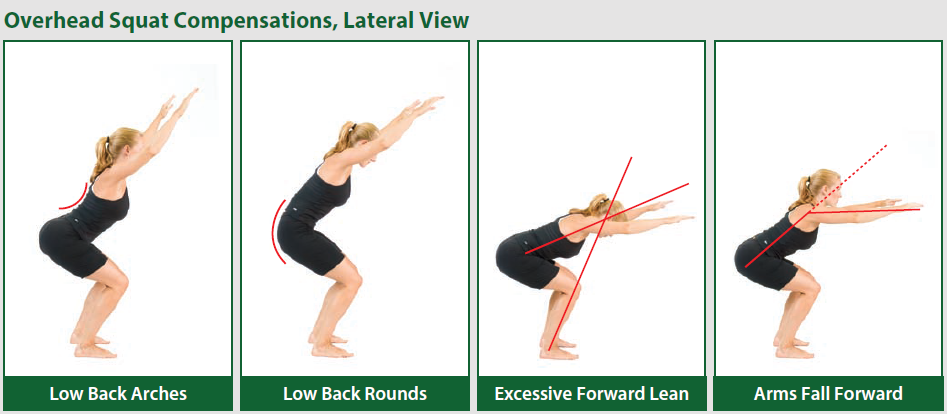
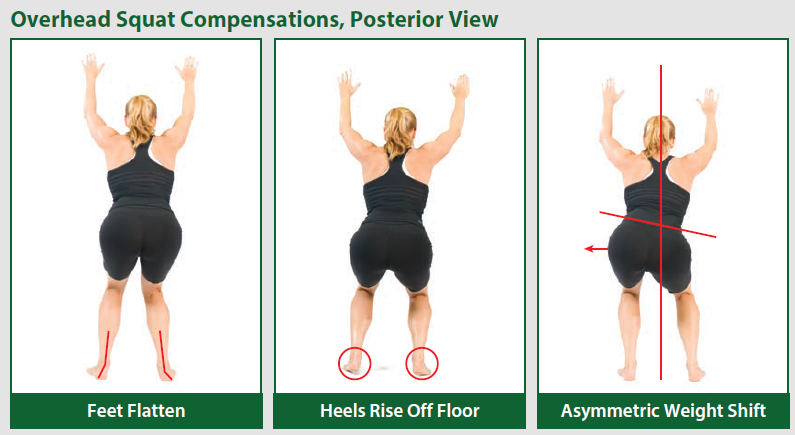
Benefits of Open Kinetic Chain Exercise
For bodybuilding and physique, OKC exercises allow you to target and isolate specific joints or muscles along the kinetic chain. This is great for building a proportional physique, improving lagging muscles (I.e. weak points), and preparing individual muscles for heavier multi-joint exercise. These exercises tend to be single-joint movements. Some examples would be a seated leg extension (ankle joint is free to move) or an overhead dumbbell press (wrists are free to move).
Benefits of Closed Kinetic Chain Exercise
Closed Kinetic Chain exercises are great for building mass and thickness, systematically improving body mechanics and overall strength. Since these exercises are compound and involve multiple joint segments, it is more common to use heavier loads since more muscles are being recruited. A few examples of CKC exercises would be a back squat (ankle joint is stationary relative to the floor) or a Machine Bench Press (wrist joint is stationary relative to the machine/bar).
When to use OKC vs CKC?
In short, you should cycle both techniques into your training. It is very common to start with Closed-Kinetic Chain movements first (compound movements) and pyramid up to heavier sets before moving on to higher-volume working sets using Open-Kinetic Chain movements to isolate specific muscle groups on auxiliary lifts. Open-Kinetic Chain training is also a great tool to focus on lagging or under-active muscle groups.
Here is an example of an intermediary bodybuilding training split working in the NASM Strength Hypertrophy Phase (best viewed on desktop or tablet):
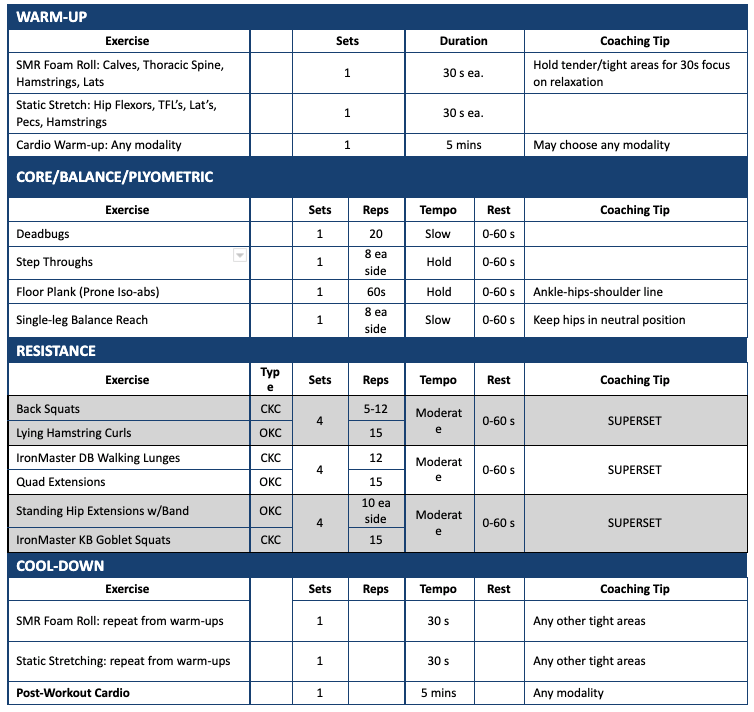
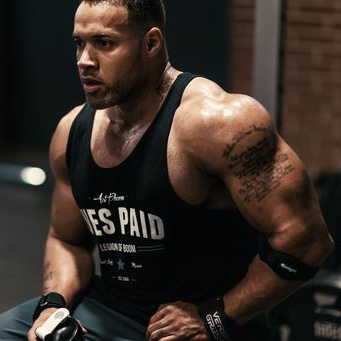
About the author Andre Adams
With over 15 years of experience, Andre Adams is a National Academy of Sports Medicine (NASM) Master Trainer with credentials in women's fitness specialist (WFS), performance enhancement specialist (PES), mental toughness (MT), weight loss specialist (WLS), Group Personal Training Specialist (PTS), and fitness nutrition specialist (FNS). Additionally, he offers advice to help curb childhood obesity in adolescents.
Andre is also a professional athlete in the International Federation of Bodybuilding (IFBB) pro league having competed in the 2015 Mr. Olympia and Arnold Classic professional physique divisions.
Instagram @AndreAdams_Official
Health & Performance Supplements www.1stphorm.com/AndreAdams
Webiste: www.andreadamsofficial.com
Recommended 1st Phorm supplements by Andre:
REFERENCES:
HTTPS://BLOG.NASM.ORG/CERTIFIED-PERSONAL-TRAINER/KINETIC-CHAIN-ASSESSMENTS-STREAMLINED
HTTPS://WWW.THEFITNESSTRAINERACADEMY.ORG/BLOG/THE-OVERHEAD-SQUAT-ASSESSMENT/
Andre writes for Ironmaster on a wide range of strength training topics as a subject matter expert, and as a customer; owning our award-winning Super Bench Adjustable Weight Bench, the Quick-Lock Adjustable Dumbbells, the IM2000 Self-Spotting (Smith Machine) Half Rack, and various other training solutions.

42 Comments
Home gym workout
The workout you provided is awesome, it is nice to have the warm-up and cool-down listed because I sometimes skip the cool-down.
Brian LaCourse, 04/11/2022 13:40:37